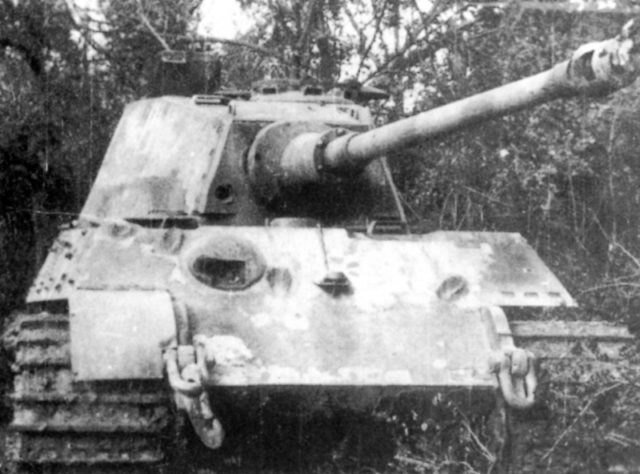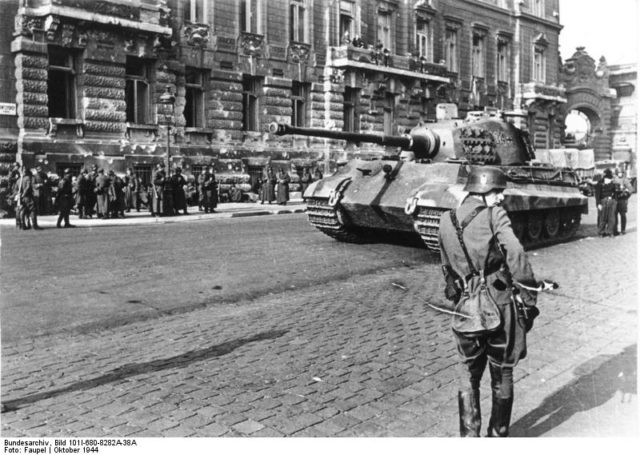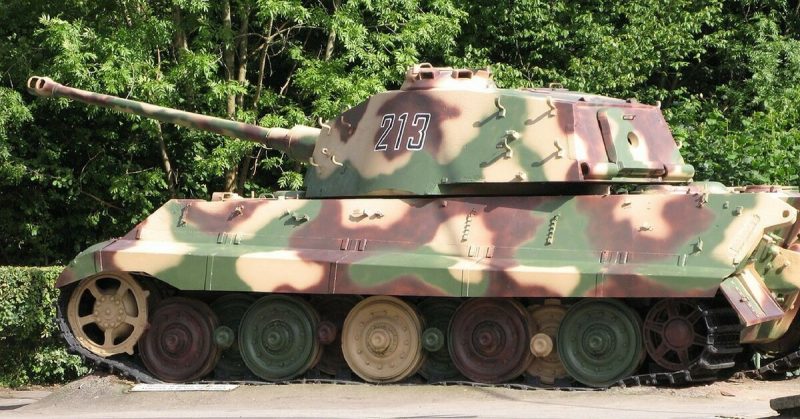Following the fearsome Tiger I, its successor brought on even more armor and firepower. Even though Tiger II was only operational during a brief period between 1944 and 1945, when 492 were built and sent to combat, it managed to earn a reputation as an almost unbeatable tank.
The initial assignment of developing the heavy tank was given to two companies ― Henschel and Porsche, in 1937 and 1939, respectively. Following the Henschel design, the tank got its sloped armor which was used for the Panther as well. Eventually, the design proposed by the Henschel company won the contest and thus, all Tiger II tanks (like the Tiger I) were produced in the Henschel industrial complex.
Porsche, which was known for its somewhat eccentric idea, was denied the opportunity to build the tank, even though its design for the turret was briefly adopted on a trial version.
The Tiger II, or the Konigstiger as it was called by the Germans, saw its first combat in France, in 1944, following the Allied invasion of Normandy. Although it was mistranslated into English as the King Tiger, the name Konigstiger was actually a German word for the Bengal tiger. Nevertheless, the name stuck as it represented the tank’s reputation.

Packed with a devastating 8.8 cm KwK 43 L/71 gun, and an advanced aiming mechanism it was capable of an 80 percent hit rate at 1,000 m. This made it one of the most effective tanks on the battlefields at the time. Its armor was durable at between 25-185 mm and provided safety for the crew. In fact, there is no reliable evidence that the front armor of any King Tiger was ever penetrated in combat.
On the Western Front, this was the most powerful tank as there were no Allied heavy tanks until the deployment of the Pershing in 1945. They too were inferior to the German firepower.
However, the first Tiger II tanks put into service on the Eastern Front often suffered from malfunctions concerning their cooling systems, as they tended to overheat. Also, the double radius steering gear which the tank used was initially particularly prone to failure.
The later versions managed to correct these disabilities, but the tank was still unreliable. The Soviet’s answer to the King Tiger was the IS-2, which operated a 122 mm gun, but lacked in armor compared to the German heavy tank.

The King Tiger saw extensive action in both the Eastern and Western Fronts, and also in crushing several uprisings within the German-occupied territories of Europe. It claimed its notoriety during the occupation of Budapest in 1944, when the Hungarian government attempted to sign a separate secret peace with the Soviet Union, thus exiting the war. After learning of this, Hitler sent the 503rd Heavy Panzer Battalion equipped with King Tigers which played a crucial role in a swift ending of hostilities.
The King Tiger, despite all its flaws, was one of the most feared tanks that participated in the Second World War.
